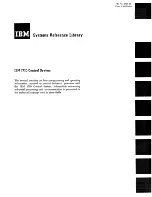
PacketStar
®
PSAX 2300 Multiservice Media Gateway User Guide
, Issue 1
Release 9.0.0
255-700-447
5-1
5
Site-Specific Configuration
Overview of This Chapter
This chapter describes how to:
•
Log onto the PSAX system
•
Configure the basic site-specific parameters of the PSAX 2300 system
•
Configure call control resource allocations
•
Enable/disable systemwide features
•
Configure interface protection groups
•
Configure internet protocol throttling
•
Activate/deactivate traps
•
Collect bulk statistics on the PSAX system to be sent to a remote statistics
server
•
Use the Equipment Configuration window
•
Configure the Stratum 3–4 module
•
Save PSAX system configuration values and log off
Before you begin the system configuration, be sure you have completed all
the installation tasks described in the appropriate PacketStar
®
PSAX 2300 Mul-
tiservice Media Gateway Installation Guide. For procedures to configure the
PSAX I/O and server modules, see the appropriate PacketStar PSAX module
user guide. All PacketStar PSAX Multiservice Media Gateway documentation
are contained on the PacketStar PSAX Multiservice Media Gateway Product
Information Library CD-ROM.
Logging onto the System
Before beginning the following procedure, be sure that your cabling on the
CPUn module is connected properly (see the PacketStar
®
PSAX 2300 Multiser-
vice Media Gateway Installation Guide).
The PSAX 2300 system is designed for continuous operation after power is
applied. Telnet sessions are supported on the Ethernet interface. Telnet ses-
sions on the Ethernet interface and the console serial interface both support
VT100 terminal emulation. See Chapter 4 for information on configuring
VT100 terminal emulation on a PC.
You can log onto the PSAX system using either of two methods for authenti-
cating user access:
•
Using the PSAX system-defined usernames (see the following procedure)
•
Using the RADIUS server-defined usernames that you have already set up
on a RADIUS server on your network (see “Setting Up RADIUS Server
Access Authentication for the PSAX System” on page 5-6 for details)
















































